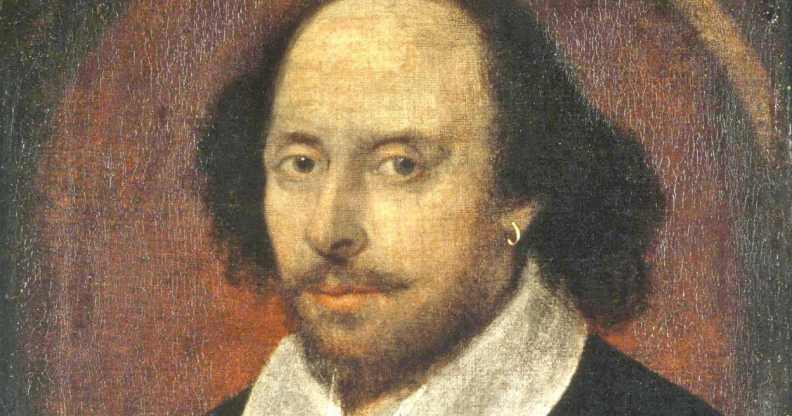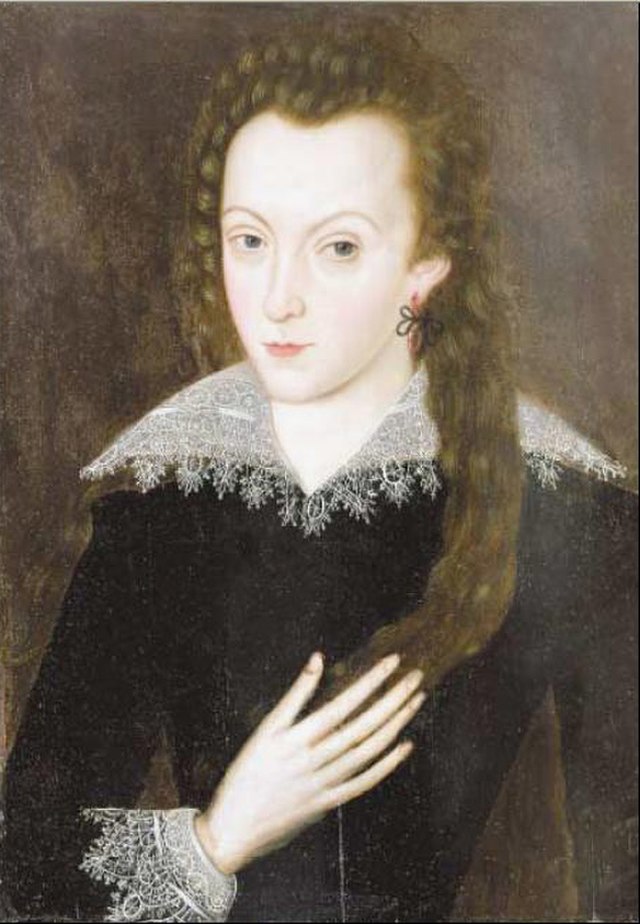Was Shakespeare queer? Historians think his most iconic sonnet was about an Elizabethan twink

William Shakespeare could have been queer, academics believe (Canva)
Historians say the evidence is “overwhelming” that William Shakespeare was queer – but the debate around his sexuality is complicated.
While Shakespeare is known for penning the most famous heterosexual love story of all time, Romeo and Juliet, his works have come under close analysis in recent years and could actually be much queerer than people give the Bard credit for.
Two-thirds of his romantic sonnets, including the iconic Sonnet 18: Shall I compare thee to a summer’s day?, are addressed to a “fair youth” believed to be Henry Wriothesley, 3rd Earl of Southampton (though some say the sonnets are platonic).
Alongside this, many of Shakespeare’s characters bent gender binaries, crossdressed and had romantic interests that can only be described as queer.
In Twelfth Night, for example, a shipwrecked Viola disguises herself as a man called Cesario and enters into the service of Duke Orsino, who is in love with Olivia. However, Olivia falls in love with ‘Cesario’ – and Viola in turn falls in love with Orsino while she remains disguised, creating a delicious love triangle.

In a video for The Globe theatre, head of research Dr Will Tosh asks if Shakespeare was actually “Shakesqueer” because of the plots and characters his works present.
“Shakespeare definitely wrote queer poetry and plays. Queer in the sense of something sexually radical or work that takes in varied gender identities, and provides an alternative vision of love to the sexual mainstream,” he explains.
However, a large number of historians still rebuke that Shakespeare was not anything other than completely heterosexual, often citing his marriage to Anne Hatheway and their three children as proof enough.
“Many take issue with making speculations about Shakespeare’s sexuality, considering it anti-academia”, Saraya Haddad a PhD researcher at the Shakespeare Institute in Stratford-upon-Avon, tells PinkNews.
“Personally, I take issue with the fact that, up until the late 20th century, an overwhelming number of scholars, mostly cis straight white men, tried to gatekeep Shakespeare’s ‘heterosexuality’”.
“They argue that we should not make presumptions about Shakespeare’s sexuality but such voices fail to recognise that outrage over suggestions that Shakespeare was not straight is in fact assuming his sexuality.
“While it shouldn’t be assumed with 100 per cent certainty that Shakespeare felt attracted to men, the overwhelming evidence which suggests he did should not be ignored.”
As Tosh points out, the question of whether or not Shakespeare is LGBTQ+ should be approached with nuance as “a person’s sexuality doesn’t necessarily fit into a tidy category”.
“Things shift depending on when and where you are,” he says in The Globe’s video.
“The way our culture understands sexual expression has an impact on how people in that culture regard their own sexualities.
“Lots of historians don’t use today’s terminology like gay, straight, bi, lesbian about figures from four centuries ago.”
He continues: “Feelings of desire are very powerful and always contribute to how a person feels about themselves. To say ‘they didn’t use the term gay in the distant past so we can’t talk about gay people back then’ closes off history for a whole community.”
During the period when Shakespeare lived, a “lot more space” was made for “queer desire than many cultures do today” and it was not uncommon for men to share beds and kiss each other on the mouth, Tosh adds.
While sodomy was illegal, and punishable by death, there “was a lot of turning a blind eye to relationships and feelings that we totally recognise as queer today”.
Summing his thoughts on the topic up, Tosh says Shakespeare was a writer with “profoundly queer literary sensibilities”.
“He was catering for the LGBTQ market long before it had such a name, and he has left us queer gifts for the ages.
“Same-sex lovers, queer icons and trans heroes who continue to inspire and represent for centuries after his death. And honestly, I think that speaks for itself.”
Haddad, who specialises in the intersections between magic and queerness, agrees.
“I don’t think locking Shakespeare’s sexuality in a specific box is necessarily productive.
“Nevertheless, I think anyone who reads his writing would find it hard to deny the overwhelming likelihood that Shakespeare was queer.
“What seems more important to me however is that queer people can see themselves in history, in literature from the past – and regardless of Shakespeare’s sexuality or gender identity, it cannot be contested that his writing is overflowing with queerness.”
How did this story make you feel?

